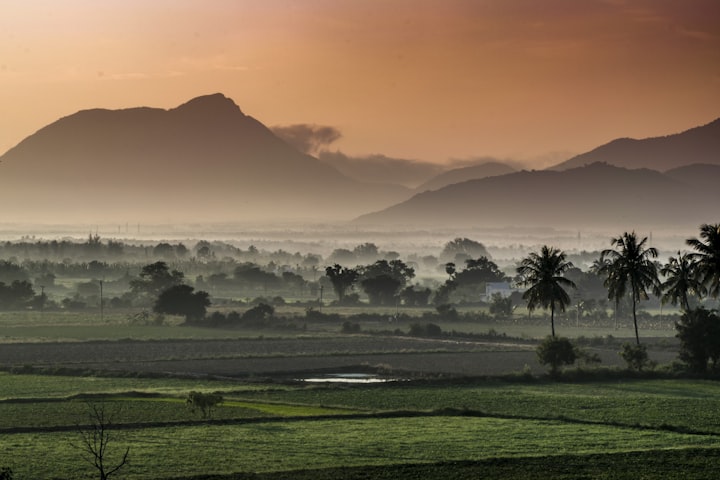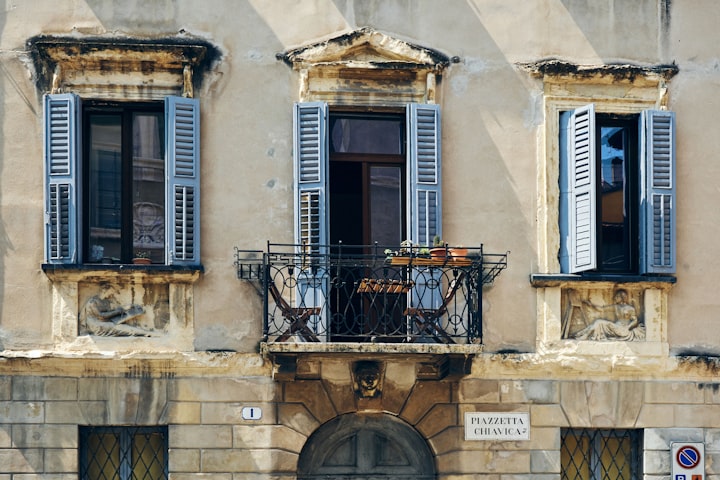
A state in southern India called Tamil Nadu has a rich and varied cultural history. The history and geography of the Tamil people have influenced the development of their distinctive language, culture, traditions, and arts.
language
Its official language is Tamil, and Tamil Nadu is a state in southern India. Tamil has a long literary history that dates back more than two thousand years, making it one of the oldest languages in the world. One of India's few classical languages that is still spoken today is this one.
Telugu, Kannada, and Malayalam are just a few of the other languages that make up the Dravidian language family, which also includes Tamil. The only Dravidian language with a sizable literary tradition, it is widely spoken not only in Tamil Nadu but also in the nearby states of Puducherry, Kerala, and Karnataka.
Tamil is written using a distinct script that is specific to that language. The script consists of 12 vowels and 18 consonants, and syllables are created by combining the characters. Sanskrit and Malayalam are two more languages that are written using the Tamil script.
Tamil has a large vocabulary and is a very complex and rich language. It is renowned for its distinctive grammar, which uses suffixes to denote tense, mood, and voice. Tamil also has a complex system of honorifics, which are used to show respect to people of different social status.
Tamil literature has made a significant literary contribution to Indian literature and is renowned for its ancient literature and exquisite poetry. The Sangam literature, which dates back to the 3rd century BCE, is one of the oldest and most extensive works of Tamil literature. It contains poetry, sayings, and descriptions of that time period's Tamil way of life.
Tamil has contributed significantly to the growth of Indian cinema. Every year, a sizable number of movies are made by the Tamil film industry, also known as Kollywood, and Tamil films are well-liked not just in India but also in nations like Sri Lanka and Malaysia.
In conclusion, Tamil is an ancient and rich language with a unique script and grammatical system. It has made a great contribution to Indian literature and culture and continues to play a key role in contemporary society through its use in daily life, film, and literature.
Music and Dance
The music and dance of Tamil Nadu have a long and vibrant history that is ingrained in the state's culture and history. Tamil Nadu's music and dance have a long and intriguing history that extends back to the prehistoric Sangam era and has been shaped over time by several cultural and religious practises.
Music
Tamil Nadu is famed for its classical music, which is marked by its complex rhythms and melodies. The traditional instruments utilised in classical music include the veena, mridangam, flute, and violin. At numerous events, including weddings, cultural gatherings, and temple festivals, classical music is played.
One of India's oldest and most intricate classical music genres, Carnatic music is a classical style that has its roots in Tamil Nadu. Its rich melodies, improvisation, and complicated rhythms are what set it apart from other musical genres. It is based on a system of ragas (melodic modes) and talas (rhythmic patterns). In addition to being taught in music schools and colleges all around the state, professional musicians frequently perform and teach Carnatic music at concerts.
Another significant kind of music in Tamil Nadu that is well-liked in rural areas is folk music. Folk music is known for its simplicity and is often performed on uncomplicated instruments like the harmonium, nadaswaram, and thavil. At weddings, fairs, and other cultural events, folk music is frequently played.
Dance
The state of Tamil Nadu is renowned for its classical dance genres like Bharatanatyam, Kuchipudi, and Mohiniyattam. Dance: Dance is an essential component of Tamil culture. One of India's oldest and most well-known classical dance genres, bharatanatyam, has its roots in Tamil Nadu. It can be identified by the complex hand and foot movements, facial emotions, and extravagant clothing.
Another classical dance style that is well-known in Tamil Nadu is kuchipudi, which has its roots in the state of Andhra Pradesh. Kuchipudi is distinguished by its use of abhinaya (expression) and natya, and it is recognised for its quick and sophisticated footwork. (dramatic elements).
Tamil Nadu is also a big fan of the traditional dancing style from Kerala known as mohiniyattam. It is distinguished by its elegant gestures, fluidity, and application of feelings and emotions.
In conclusion, Tamil Nadu has a rich and varied musical and dance tradition that is ingrained in the state's culture and history. Carnatic music, Bharatanatyam, Kuchipudi, and Mohiniyattam are only a few examples of the classical dance and music styles that are significant to Tamil culture and continue to contribute significantly to the state's cultural history.
Festival
A state in southern India with a rich history and culture is called Tamil Nadu. The state is renowned for its colourful festivities, which are observed all year long. Tamil Nadu's festivals offer a chance for people to get together and enjoy while also reflecting the state's rich traditions and culture.
The following are a few of the main holidays observed in Tamil Nadu:
Pongal : To commemorate the beginning of the harvest season, Pongal, one of Tamil Nadu's most significant festivals, is observed in the middle of January. It is a four-day celebration that is enthusiastically observed and entails cooking traditional foods like the sweet rice dish Pongal.
Tamil New Year: To commemorate the start of the Tamil calendar year, Tamil New Year, commonly referred to as Puthandu, is observed in the middle of April. People cook special dishes, wear new attire, and celebrate with customs and rituals from long ago.
Mahamaham: Mahamaham is a significant festival that takes place in Kumbakonam once every 12 years. A dip in the Mahamaham tank during this Hindu festival, which is devoted to Lord Shiva, is thought to be able to atone for past transgressions.
Natyanjali Dance Festival: In Chidambaram, a five-day event known as the Natyanjali Dance Festival is held in honour of Lord Shiva. The festival features performances by various dance troupes and is devoted to Bharatanatyam, a traditional dance style that has its roots in Tamil Nadu.
Thaipusam: Hindus celebrate Thaipusam in January or February to pay homage to Lord Murugan, the son of Lord Shiva. People pierce their skin with needles and hooks as a kind of penance during the event, which is commemorated with elaborate processions.
Karthigai Deepam: To honour Lord Shiva, a celebration called Karthigai Deepam is held in November or December. In celebration, lamps and candles are lit in houses and temples; it is said that doing so will ward off evil and provide good fortune.
Diwali: Also referred to as the event of Lights, Diwali is a significant event in Tamil Nadu and is observed in October or November. It is observed by blasting firecrackers, exchanging candy, and lighting candles and lamps.
Food
Idli and dosa: Served for breakfast, lunch, and dinner in Tamil Nadu, idli and dosa are traditional dishes. Dosa is a crispy, savoury crepe made from fermented rice and lentil batter, whereas idli is a steamed rice and lentil cake. Both are frequently served with sambar and chutney.
Sambar: A lentil-based stew cooked with a variety of vegetables and spices including turmeric, cumin, and coriander is known as sambar. It frequently goes with rice or is a side dish for vada, idli, or dosa.
Rasam: Made with tamarind, tomato, lentils, and spices like cumin and pepper, rasam is a hot and sour soup. It is frequently offered as a side dish with rice or as a beverage to aid with digestion after eating.
Pongal: Pongal is a rice dish that is cooked with rice, lentils, and ghee and is both sweet and savoury. During the Pongal celebration, it's frequently served with sambar and coconut chutney.
Biryani: Long-grain rice, meat, and delicious spices like cinnamon, cardamom, and cloves are the main ingredients in the rice dish known as "biryani." It is a common dish at weddings and other events and is frequently served with raita.
Vadai: Lentils, onions, and spices are used to make the crispy and flavorful fritter known as vadai. It is frequently offered as a side dish to go with sambar and chutney or as a snack.
Payasam: A sweet pudding known as payasam is cooked with milk, rice, vermicelli, or other grains and is sweetened with either sugar or jaggery. It's frequently offered as dessert during celebrations and special events.
Craft and Art
Tamil Nadu has a long history of artistic and craft traditions, and the state is renowned for its rich cultural heritage. Here are a few of Tamil Nadu's most well-known arts and crafts:
Tanjore Paintings: Tanjore paintings are traditional works of art that were first created in Thanjavur, Tamil Nadu. These paintings stand out for their vivid hues, minute details, and use of gold leaf and diamonds as embellishments. The paintings typically include portraits of monarchs and queens, mythological scenes, or religious deities.
Pattachitra: Although it originated in the state of Odisha, Tamil Nadu also employs this traditional art form. Natural colours are used to paint on cloth, typically representing scenes from mythology or religion.
Kalamkari: The traditional textile art of kalamkari entails block printing or hand painting on cotton or silk fabrics. The patterns frequently feature geometric patterns, natural scenery, or mythological settings.
Stone Carving: The temples, historic landmarks, and public structures in Tamil Nadu are all decorated with beautiful stone carvings. The carvings frequently feature religious figures, scenarios from myths, or scenes from historical events.
Brass Lamps: Brass lamps are a common skill in Tamil Nadu and are used in religious events and as household adornment. The lamps come in a variety of sizes and shapes and are frequently covered with complex motifs.
Wood Carving: With a long history that dates back to the Chola era, wood carving is another well-liked skill in Tamil Nadu. The carvings, which are frequently seen in temples and public structures, typically portray religious or mythological scenes.
Wood Carving: Women in Tamil Nadu's rural communities traditionally engage in the craft of basket weaving. The baskets, which can be used for storage, carrying objects, or simply as ornamental pieces, are crafted from bamboo, reeds, or other natural materials.
Religion
A state in southern India called Tamil Nadu is renowned for its many different spiritual and religious traditions. The main faiths and spiritual practises practised in Tamil Nadu are as follows:
Hinduism: With the majority of the population identifying as Hindus, Hinduism is the dominant religion in Tamil Nadu. The Meenakshi Amman Temple in Madurai, the Brihadeeswarar Temple in Thanjavur, and the Kapaleeswarar Temple in Chennai are just a few of the notable Hindu temples that can be found throughout the state. Tamil Nadu's culture and history are heavily influenced by Hinduism, and several festivals like Pongal, Diwali, and Navratri are fervently observed.
Christianity: The second-largest religion in Tamil Nadu is Christianity, which has a sizeable Christian presence in several areas of the state, particularly along the eastern coast. Since St. Thomas, one of the twelve apostles of Jesus, is thought to have been killed there, the St. Thomas Mount in Chennai is a well-known destination for Christian pilgrims.
Islam: With a sizeable Muslim presence in several areas of the state, Islam is the third-largest religion in Tamil Nadu. The state is home to a number of significant mosques, including the Thousand Lights Mosque in Chennai and the Meenakshi Sundareswarar Mosque in Madurai.
Jainism: With numerous Jain temples and pilgrimage destinations situated in the state, Jainism has a sizable presence in Tamil Nadu. Jain worshippers frequently visit the Tirumalai Jain Temple in Vellore and the Jain cave temples in Sittanavasal.
Buddhism: Buddhist attractions include the historic rock-cut caves in Madurai and the Buddhist monasteries in Kanyakumari, despite Tamil Nadu's lack of a significant Buddhist population.
Tamil Nadu is also the home of a number of spiritual practises like yoga, meditation, and Ayurveda in addition to these major religions. The nation is renowned for producing spiritual luminaries like Sri Ramana Maharshi and Sri Aurobindo, whose teachings and philosophies have affected and inspired people all over the world.
The culture of Tamil Nadu is rich and diversified overall, and it is distinguished by its distinctive language, music, dance, cuisine, and arts. The nation's culture has been influenced by a variety of factors over the course of its lengthy and complicated history, including politics, trade, and religion.






Comments
There are no comments for this story
Be the first to respond and start the conversation.